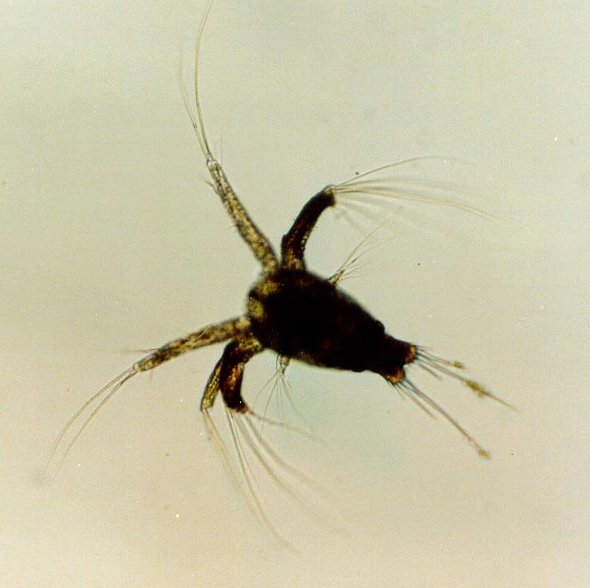Mutant Future — Larval Humans

Awhile ago I came up with a physical mutation, Larval Form, as a counterpart to Animate Seed. It allows the creation of young creatures that can have a very different appearance and mutation set than their parents. It can also allow for mutants that produce more offspring than their stock species. Here are a few ideas for applying it to mutant humans.
One of the most extreme is having the adults and larvae live in two exclusive habitats. The adults could live on land and their children could be restricted to the oceans. Another is to have a larva that develops into several children. Say an octopus like form where each of its arms grows into a child. If that form can regenerate its arms, the seas may abound with children swimming towards the shores, at least in some seasons.
Of course not all of them will be that extreme. For example, there are children that hide within the branches of trees while their massive, rhino like parents scour the ground of forage. As the kids age, their mass increases to the point where they lose their ability to climb. These mutants may have larval relics in the form of drawbacks- they retain their climbing claws and joints, both of which make it hard to walk and use tools. Some more examples include:
Children that need a lot of food as they grow very fast, becoming adult size in 2-5 years. They are still children in their mentality and this can lead to some weird social issues. They may be carnivores whereas adults are herbivores, the result of engineering that was meant to reduce the amount of meat needed by the human population.
Some children may have extra limbs, shedding them is a sign of adulthood. Those with extra hands that are useful must have the dual cerebellum or quick mind mutations. They allow for fine control over the hands and fingers (or other digits). Such children may be able to craft things their parents can not, thus making them a vital part of community survival and/or economy.
Children with unique sense can act as watch dogs or can go places their parents can not (such as deep underground, underwater or a null gravity lab).
Fire throwing children (via Energy Ray) that protect their parents more often than the parents protect them. Adults without children are vulnerable, thus encouraging large families.
And that brings up an important point. Most of the wastelands are like post Black Death Europe. Medicine is a joke, disease is rampant and the average life span is very low. Of course one has to add in predation from monsters, raiders and robots, death from radiation poisoning and superscience gone wrong and the occasional "natural disaster" (like a space station cashing onto a village). Many children will be produced, but few of them will survive. The strongest and luckiest pure humans and mutants will actually outbreed the others in a time frame that people can understand (decades or even years).
One possibly important part of community design will be how they treat their offspring. If the death toll is high, kids may not get a name until they are 3 or 5 and are treated poorly until they are teenagers and perform the hardest work. If the death toll is very high, children may be treated as treasures and kept behind locked vault doors until they become adults or even elderly- such communities produce adventuring PCs who have more knowledge but less time to use.




